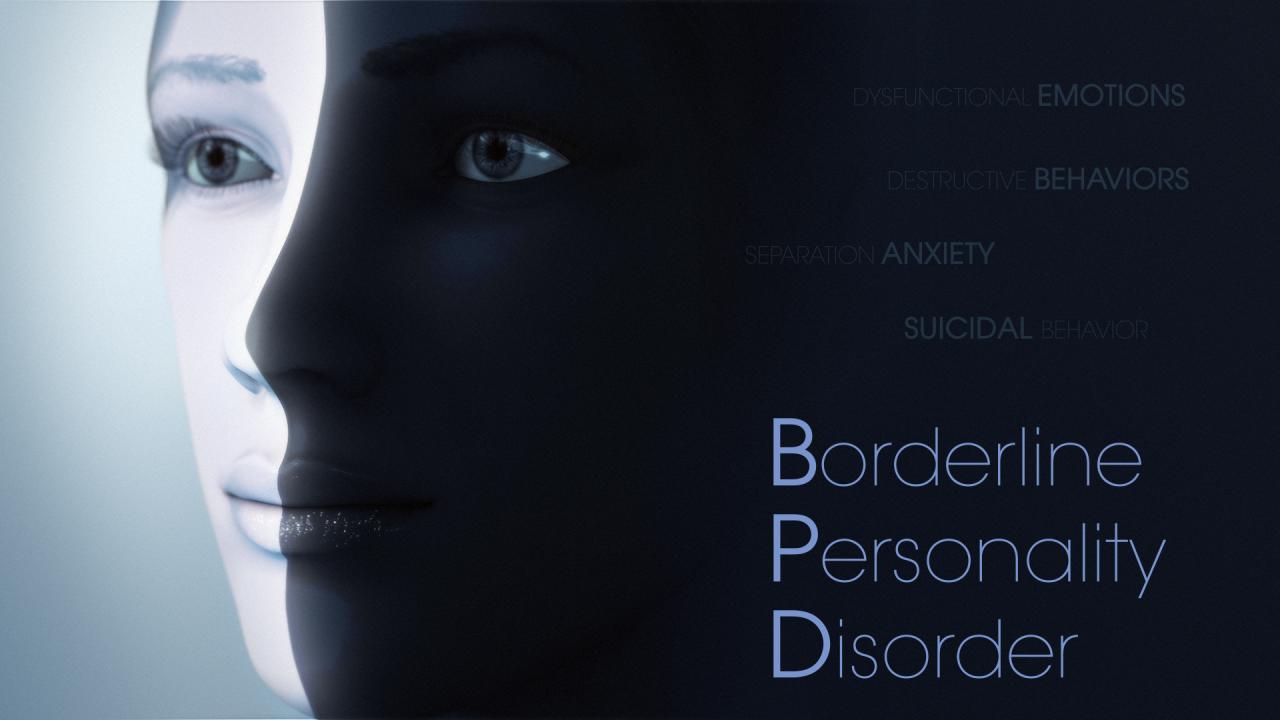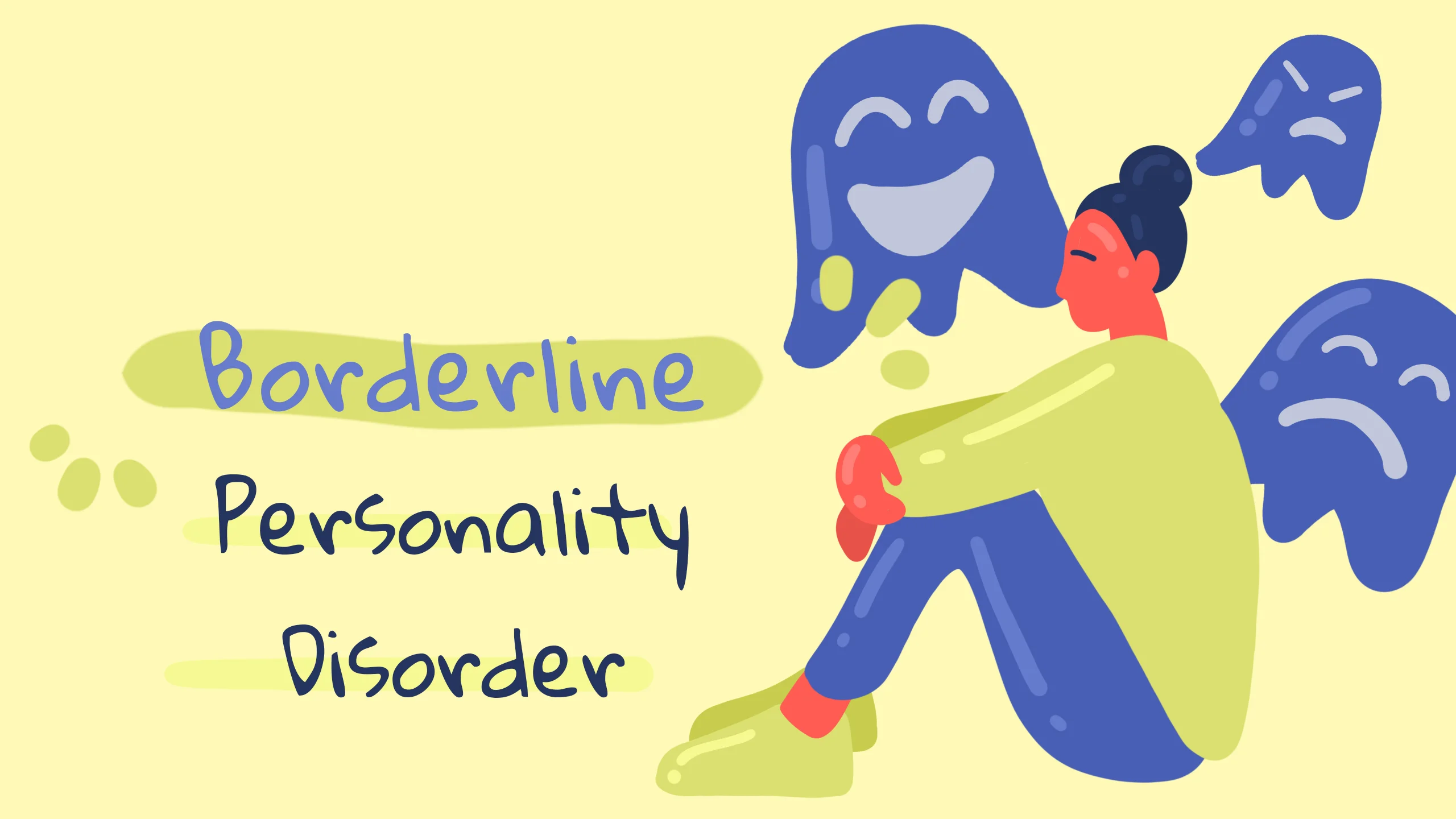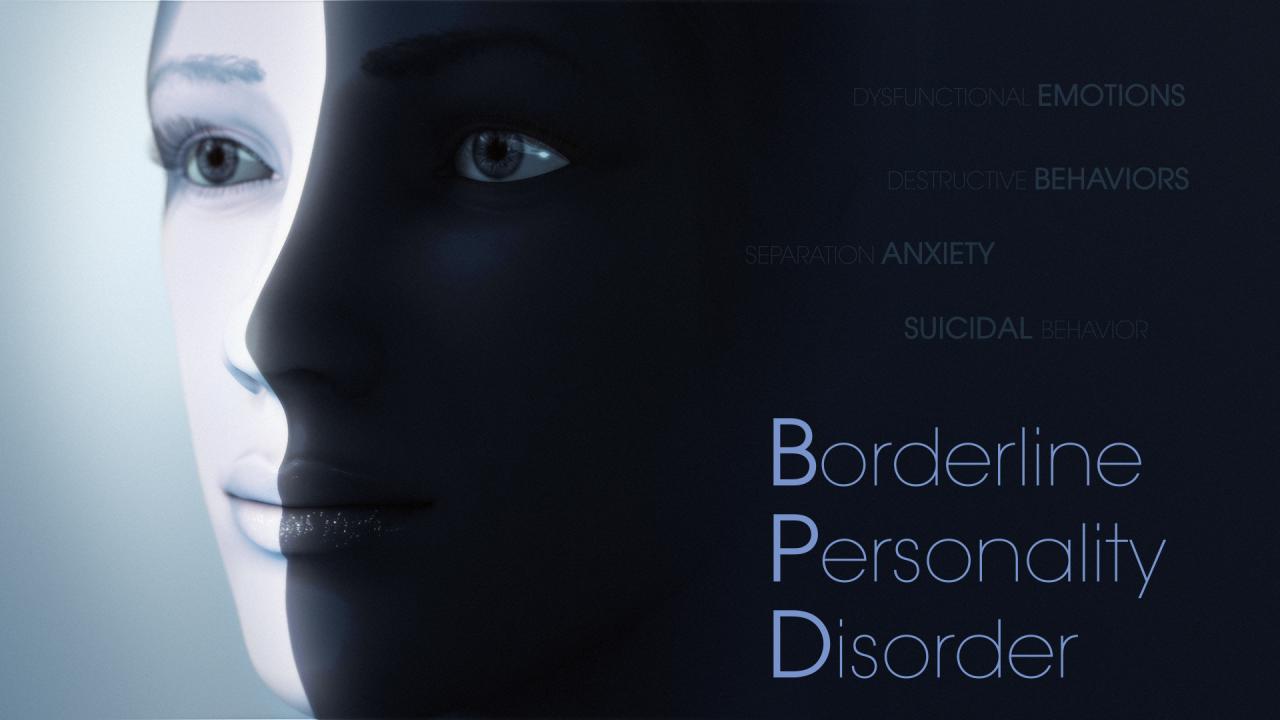Borderline personality disorder (BPD) is a complex mental health condition that affects emotions, thoughts, and behaviors. Individuals with BPD often experience intense mood swings, unstable relationships, impulsive actions, and a distorted self-image.
In this comprehensive guide, we delve into the intricacies of BPD, exploring its symptoms, causes, treatment options, and more. Join us as we unravel the complexities of this enigmatic disorder.
Symptoms and Diagnosis

Borderline Personality Disorder (BPD) is a complex mental health condition characterized by a pattern of intense and unstable emotions, impulsive behavior, and difficulty maintaining healthy relationships.
The symptoms of BPD can be wide-ranging and vary in severity. Some of the most common symptoms include:
- Unstable emotions that can shift rapidly from intense happiness to overwhelming sadness, anger, or emptiness
- Impulsive and reckless behavior, such as spending sprees, substance abuse, or unsafe sex
- Difficulty controlling anger, often leading to physical altercations or verbal outbursts
- Intense fear of abandonment, which can lead to desperate attempts to prevent perceived abandonment
- Unstable relationships, characterized by idealization and devaluation of others
- Chronic feelings of emptiness or boredom
- Suicidal or self-harming behavior
Diagnostic Criteria
The diagnostic criteria for BPD, as defined by the Diagnostic and Statistical Manual of Mental Disorders (DSM-5), include:
- A persistent pattern of instability in interpersonal relationships, self-image, and affects
- At least five of the following symptoms:
- Frantic efforts to avoid real or perceived abandonment
- A pattern of unstable and intense interpersonal relationships characterized by alternating between extremes of idealization and devaluation
- Identity disturbance: markedly and persistently unstable self-image or sense of self
- Impulsivity in at least two areas that are potentially self-damaging (e.g., spending, sex, substance abuse, reckless driving, binge eating)
- Recurrent suicidal behavior, gestures, or threats, or self-mutilating behavior
- Affective instability due to a marked reactivity of mood (e.g., intense episodic dysphoria, irritability, or anxiety usually lasting a few hours and only rarely more than a few days)
- Chronic feelings of emptiness
- Inappropriate, intense anger or difficulty controlling anger (e.g., frequent displays of temper, constant anger, recurrent physical fights)
- Transient, stress-related paranoid ideation or severe dissociative symptoms
Differential Diagnosis
BPD shares symptoms with several other mental health conditions, including:
- Bipolar disorder
- Depression
- Anxiety disorders
- Post-traumatic stress disorder (PTSD)
- Schizophrenia
It is important for a qualified mental health professional to conduct a thorough evaluation to accurately diagnose BPD and rule out other possible conditions.
Causes and Risk Factors
Borderline personality disorder (BPD) is a complex mental illness that is thought to be caused by a combination of genetic, environmental, and psychological factors.
Genetic Factors
Studies have shown that BPD tends to run in families, suggesting that there may be a genetic component to the disorder. However, the exact genes that are involved in BPD have not yet been identified.
Environmental Factors
Environmental factors, such as childhood trauma, abuse, or neglect, are also thought to play a role in the development of BPD. These experiences can lead to changes in brain development and function, which may contribute to the symptoms of the disorder.
Psychological Factors, Borderline personality disorder
Psychological factors, such as low self-esteem, difficulty regulating emotions, and a tendency to engage in impulsive behaviors, are also thought to be involved in the development of BPD.
Neurobiology of BPD
Research has shown that BPD is associated with changes in the brain regions and neurotransmitter systems that are involved in emotion regulation, impulse control, and self-perception.
Treatment and Management: Borderline Personality Disorder

Borderline personality disorder (BPD) is a complex mental health condition that can significantly impact a person’s life. Effective treatment requires a multifaceted approach involving psychotherapy, medication, and lifestyle interventions tailored to the individual’s needs.
Psychotherapy
Psychotherapy is the cornerstone of BPD treatment, with Dialectical Behavior Therapy (DBT) being the most widely recognized and effective approach. DBT focuses on teaching individuals skills to regulate their emotions, tolerate distress, and improve interpersonal relationships.
Dialectical Behavior Therapy (DBT)
DBT is a structured, skills-based therapy that combines cognitive-behavioral techniques with mindfulness and acceptance strategies. It consists of four main modules:
- Core Mindfulness
- Interpersonal Effectiveness
- Emotion Regulation
- Distress Tolerance
DBT teaches individuals how to identify and challenge maladaptive thoughts and behaviors, manage intense emotions, and communicate effectively with others.
Medication
Medication can be helpful in managing certain symptoms of BPD, such as mood swings, impulsivity, and anxiety. Common medications used include:
- Antidepressants (e.g., selective serotonin reuptake inhibitors or SSRIs)
- Mood stabilizers (e.g., lithium or valproate)
- Antipsychotics (e.g., olanzapine or risperidone)
Medication should be used in conjunction with psychotherapy and tailored to the individual’s specific needs.
Lifestyle Interventions
Lifestyle interventions can complement psychotherapy and medication in managing BPD symptoms. These include:
- Emotional Regulation Techniques:Practicing mindfulness, deep breathing exercises, and progressive muscle relaxation can help regulate emotions and reduce impulsivity.
- Coping Mechanisms:Developing healthy coping mechanisms, such as exercise, spending time in nature, or engaging in creative activities, can provide an outlet for distress and reduce self-destructive behaviors.
- Social Support:Building a strong support system of family, friends, or support groups can provide emotional validation and practical assistance.
Final Summary
Understanding borderline personality disorder is a journey of empathy and insight. Through research and personal accounts, we have gained a deeper appreciation for the challenges faced by individuals living with BPD. Remember, compassion and support are vital in creating a path towards recovery and well-being.
FAQ Insights
What are the key symptoms of BPD?
Symptoms of BPD include intense mood swings, unstable relationships, impulsive behaviors, a distorted self-image, and feelings of emptiness.
What causes BPD?
The exact cause of BPD is unknown, but it is believed to be a combination of genetic, environmental, and psychological factors.
How is BPD treated?
Treatment for BPD typically involves psychotherapy, medication, and lifestyle interventions. Dialectical Behavior Therapy (DBT) is a specialized psychotherapy that has been shown to be effective in treating BPD.

